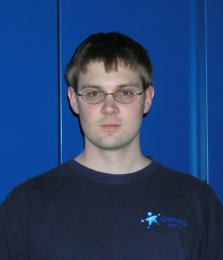Compact integrated optical devices for optical sensor and switching
applications
Promotion date: 7. October 2010
Promotors: Prof. dr. Markus Pollnau
Assistant Promotor: Dr. ir. Rene de Ridder
| This thesis describes the design, fabrication, and characterization of compact optical devices for sensing and switching applications. Our focus has been to realize the devices using CMOS-compatible fabrication processes. In particular, the silicon photonics fabrication platform, ePIXfab, has been used for this purpose. Grated silicon photonic wires were designed and fabricated using the ePIXfab fabrication platform to realize a cost effective, compact and sensitive biosensor. Label-free enzyme sensing was also demonstrated with the sensor, after depositing an immobilized enzyme-specific anti-body layer on the sensing element. Such sensors are expected to have applications in, e.g., medical diagnostics and detection of contaminants in the food and feed industry. Using CMOS-compatible technology an electromechanically actuated compact optical switch was developed. This type of switch is expected to be an attractive alternative to thermo-optical actuation due to its much smaller power consumption, yet providing similar tuning range and speed. Also a new integrated optical read-out method for micro-cantilever displacements was developed. The optical read-out of cantilever deflection can for example be used in micro-cantilever sensor applications. These sensors are based on deflection of a cantilever when exposed to an analyte, such as hydrogen gas. |
Was the research fundamental or more application oriented?
Both research topics, optical switch and optical sensor, were application oriented.
Integrating the new mechano-optical switch was boundary breaking. Preliminary results showed that the device functioned very well. The research work on this topic still continues at MESA+ for at least another year.
As to the other part of the research, using silicon photonics, fabricated with deep UV lithography, contributes to new ways of mass production for different sensor applications. Many groups working on this topic could benefit from this research.
Did the thesis work lead to nice publications?
Two reputable magazines published our findings: Photonics Technology Letters and Sensors & Actuators B. In addition, we are in progress of submitting one more paper. Also I presented my work at international conference talks in Brussels, Capri and Eindhoven, to mention a few.
Was there a special moment during the project that you remember very well?
In fact, one could say, we had a very special half year in which we did some decisive cleanroom work and process integration. In this period we managed to monolithically integrate micro cantilevers on silicon photonics chips: a crucial step to realize the mechano-optical switch in a cost effective way.
Tackling these kind of problems together with a team of experts, builds up one’s personal experience and knowledge hugely, on a day to day basis. It was a great opportunity being able to develop my skills during the thesis project, in collaboration with these very talented people. The level of cleanroom facilities and expertise at Mesa+ is very impressive, I believe.
What are your future plans?
Right now, I am working in a development team at ASML. The work here is different from academic research in many ways. I like to experience the way research in industry is performed, building up new skills, both as a physician and as a member of a new kind of team.

